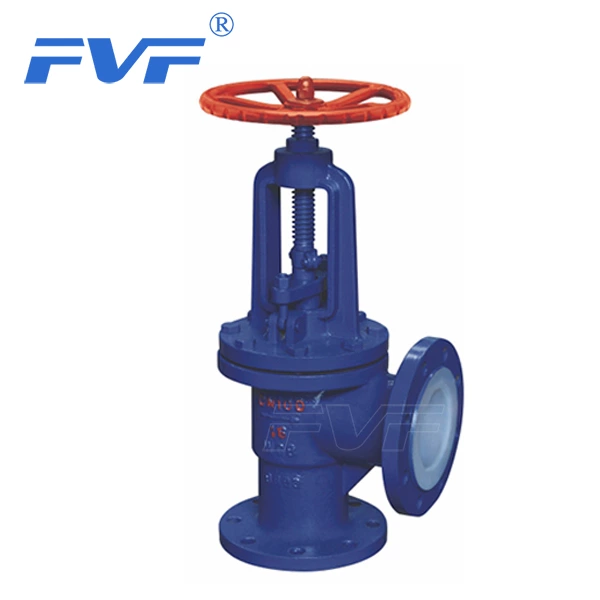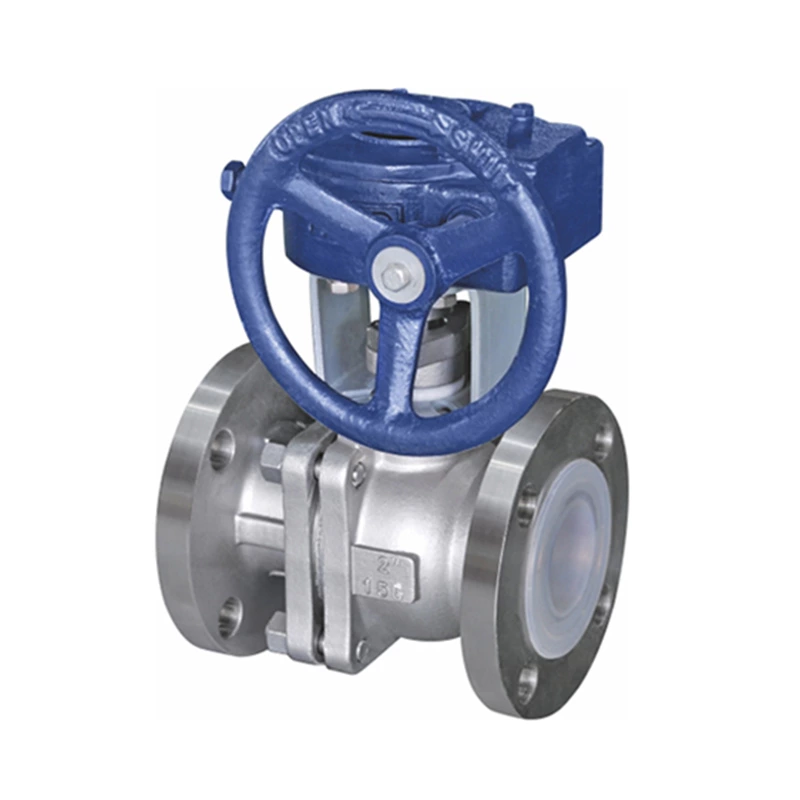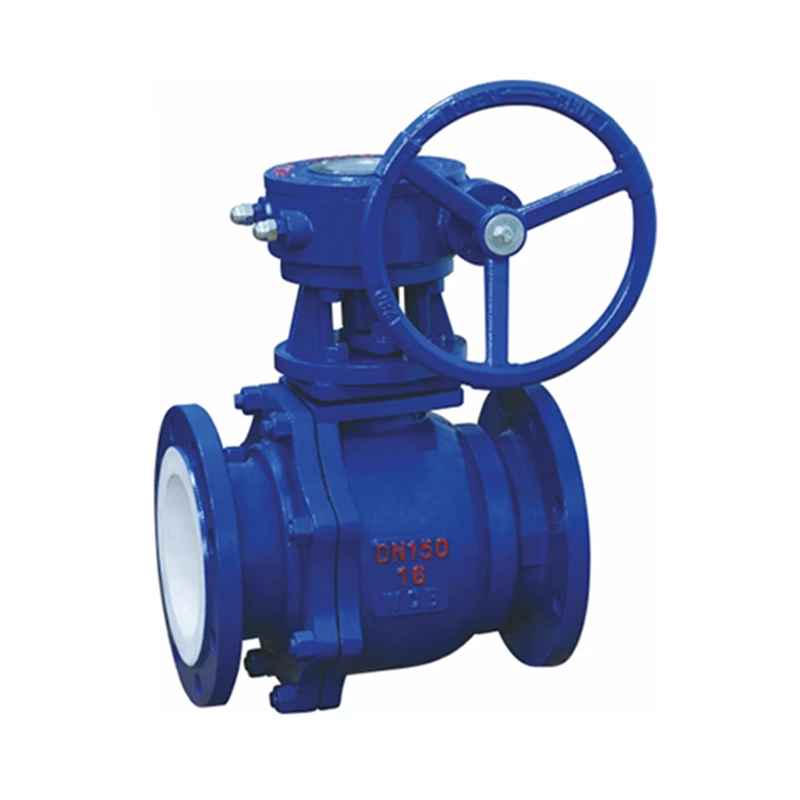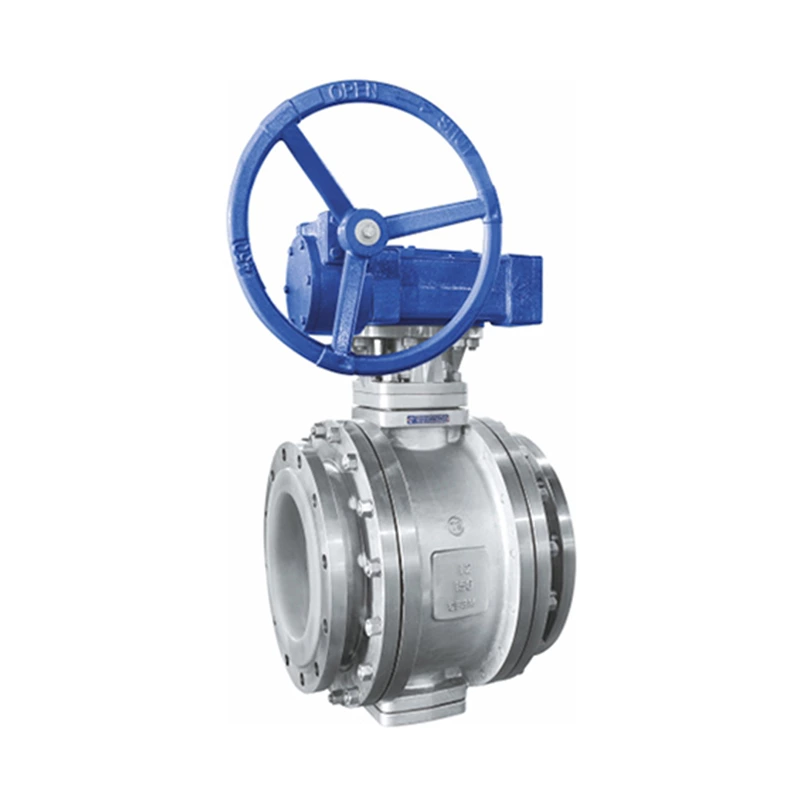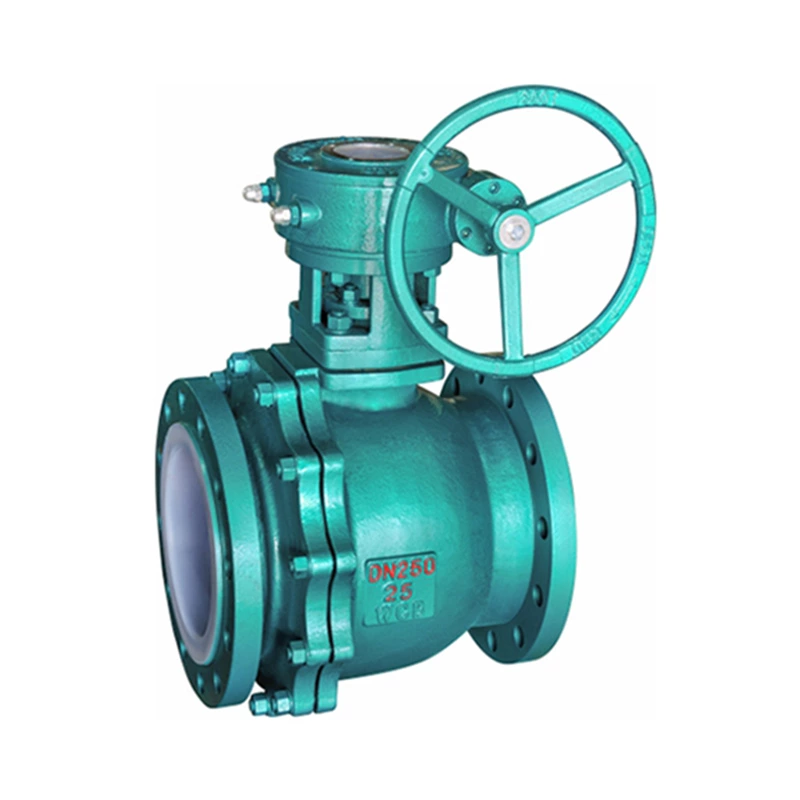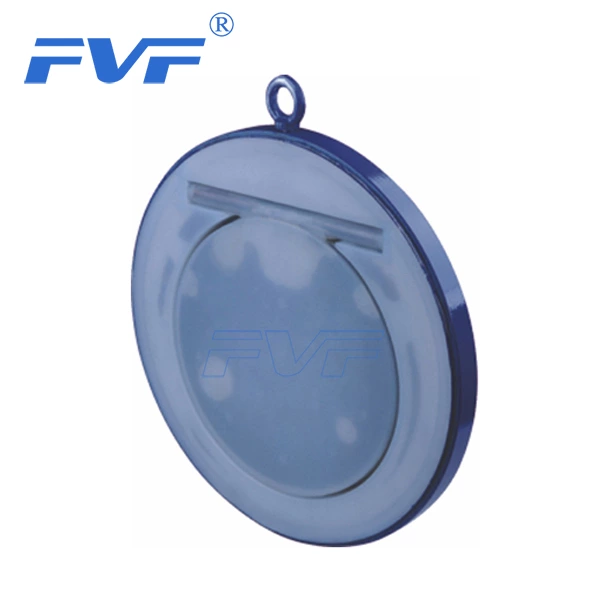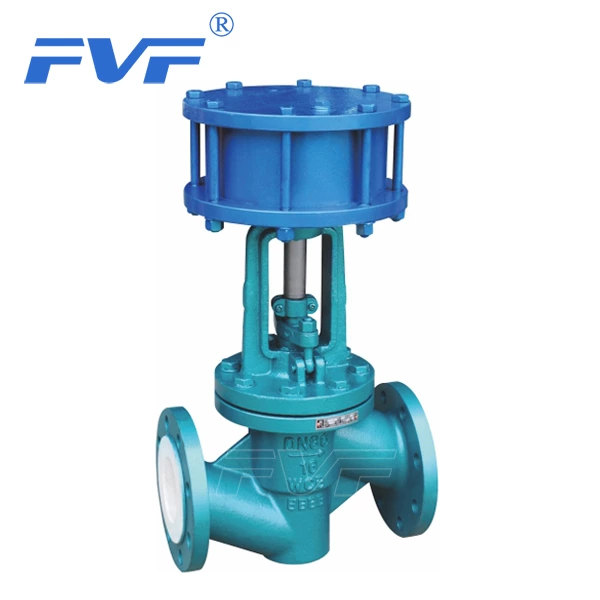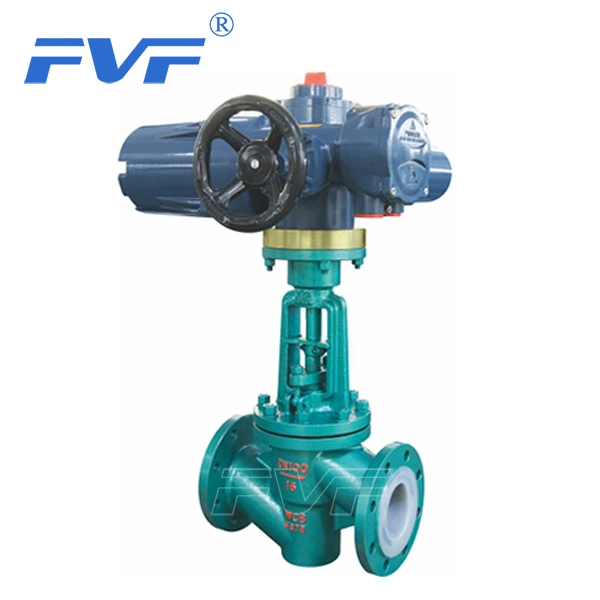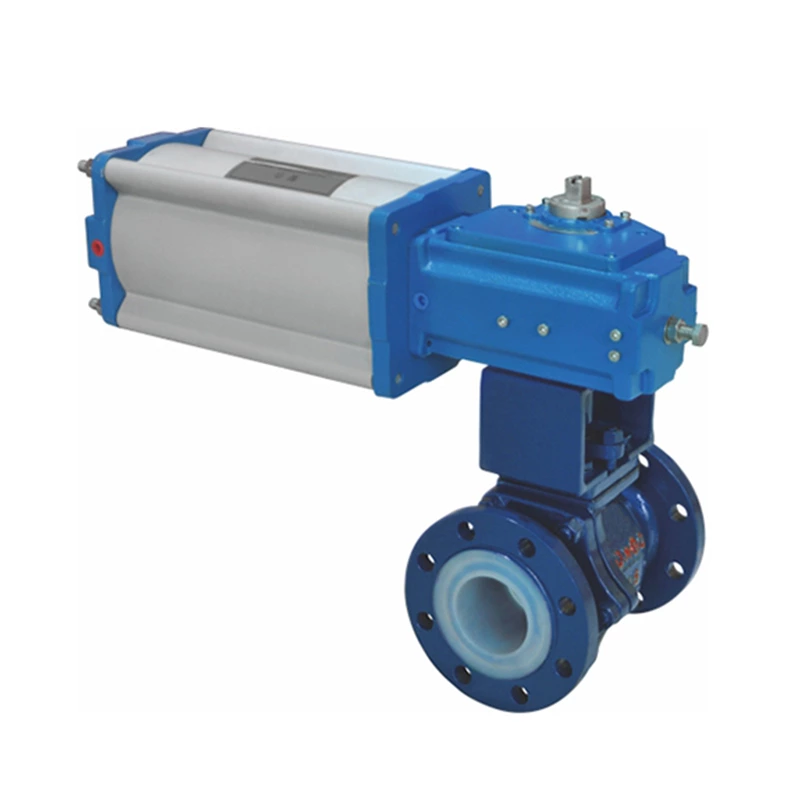The Development Trend Of High-tech Valves In Various Industries
With the continuous development of science and technology, the market of Lined Valve products in my country is also developing towards high-tech content, high parameters, strong corrosion resistance and long life. Based on the analysis of domestic and foreign valve technology and domestic and foreign valve market demand, the development trend and investment direction of industrial valves and high-tech valve industry in various industries in recent years are summarized as follows:
1. Valves for petrochemical and power
The focus of structural adjustment of petrochemical and power valve products is to develop missing products. As follows:
⑴ High temperature and high pressure regulating valve
The structural design of high temperature and high pressure regulating valves used in large thermal power units should be determined according to its flow characteristics and working condition control requirements. It can be single seat, double seat or sleeve structure. The nominal diameter of the regulating valve: DN50~500mm; nominal pressure: ≤42.0MPa; operating temperature: 510~570℃
⑵ Temperature and pressure reducing valve
The temperature and pressure reducing valve, the petrochemical industry requires that it can be designed to be similar to Fisher's CVS valve, and the pressure and temperature can be controlled in one valve. The water spray cooling control after pressure reduction must be accurate (within the range of 4~7℃), the valve closing is tight, low noise, and long life.
⑶ High temperature and high pressure large diameter safety valve
The high temperature and high pressure large diameter safety valve used in steam system can adopt spring type design structure. The key issues mainly solved in the design are: the set pressure, return seat pressure, sealing performance, repeated action stability and spring fatigue of this type of valve. Its nominal diameter: DN200~400mm; nominal pressure: ≤5.0MPa; maximum operating temperature: 570℃.
⑷ High pressure steam trap
The high pressure steam trap used to remove condensate from high pressure steam system can be developed into thermal dynamic type HRW, HRF disc type; mechanical type high pressure free float type; thermal static type BK27, BK28, BK212 bimetallic type. The nominal diameter of this type of valve is DN15~50mm; the nominal pressure is 15.0MPa.
2. Valves for oil and gas wellhead devices
Valves for oil and gas wellhead devices are mainly single or double gates that meet the US API6A standard, forged steel parallel gate valves with or without diversion holes, mud valves, angle throttle valves, parallel regulating valves for oil fields, straight-through check valves for oil fields, parallel gate valves for water injection\polymers, clamp-type parallel gate valves, pilot safety valves and check valves.
The nominal pressure level of valves used in oil and gas wellhead devices is API2000psi, 3000psi, 5000psi, 10000psi, 15000psi, 20000psi; the nominal diameter is DN46~228mm (113/16in~9in); the temperature level is K (-60~182℃), L (-42~182℃), P (-29~182℃), R (room temperature), S (-18~166℃), T (-18~182℃), U (-18~121℃), V (2~121℃); the material requirements are AA, BB, CC, DD, EE, FF, HH; the material performance requirements are 36K, 45K, 60K, 75K; the product technical requirements are PSL1 (product specification level 1), PSL2 (product specification level 2), PSL3 (product specification level 3), PSL4 (product specification level 4).
3. Valves for long-distance oil and gas pipelines
Valves for long-distance oil and gas pipelines are mainly single-disc or double-disc flat gate valves with or without diversion holes that meet the American API6D standard; forged steel or cast steel three-piece, top-mounted or fully welded fixed ball valves; oil-sealed or pressure-balanced plug valves; swing or butterfly check valves, ball check valves; cleaning valves, etc.
The nominal pressure levels of these valves are CL150 (PN2.0MPa), CL300 (PN5.0MPa), CL400 (PN6.4MPa), CL600 (PN10.0MPa), CL900 (PN15.0MPa), CL1500 (PN25.0MPa), CL2500 (PN42.0MPa); the nominal diameter is DN50~1500mm (2in~60in); the technical requirements for fire resistance test are in accordance with ISO10497; the pressure test of valves is in accordance with ISO5208.
4. Valves for nuclear power
The technical characteristics and requirements of valves for nuclear power are higher than those of valves for conventional large thermal power plants. Valves generally include gate valves, stop valves, check valves, butterfly valves, safety valves, main steam isolation valves, ball valves, diaphragm valves, pressure reducing valves and control valves; the highest technical parameters of representative valves are: maximum diameter DN1200mm (nuclear level 3 butterfly valve), DN800mm (nuclear level 2 main steam isolation valve), DN350mm (nuclear level 1 main circuit gate valve); maximum pressure: about 1500 pounds; maximum temperature: about 350℃; medium: coolant (borated water), etc. Requirements for the production of nuclear-grade valve products: usually in accordance with the nuclear industry standard EJ, the US ASME, IEEE standards and the French pressurized water reactor nuclear island mechanical equipment design and construction rules RCC-M.
The specific types and parameters of the development of nuclear power valves are as follows:
⑴ Gate valve without stuffing box:
a hydraulically driven gate valve. The valve uses its own pressure water to push the piston to open or close. The valve has a nominal diameter of DN350, 400mm; working pressure: PN17.5MPa; working temperature: 315℃.
b Fully enclosed electric gate valve. The valve should use a special screen-enclosed motor to make the gate open and close through the inner planetary reduction mechanism working in water. The valve has a nominal diameter of DN100~800mm; working pressure: PN2.5~45.0MPa; working temperature: 200~500℃.
Note: The advantages of the above two types of gate valves without packing box: no packing seal, avoiding external leakage points, and reducing energy consumption. Disadvantages: complex structure and high cost.
⑵ Nuclear power stop valve:
Stop valve used on auxiliary pipelines. The valve usually has three structures, namely, packing stop valve, bellows stop valve and metal diaphragm stop valve. The valve medium is water and steam with medium parameters (medium temperature and medium pressure); nominal diameter: DN10~150mm.
⑶Butterfly valve for nuclear power:
Butterfly valve used in cooling system and air medium conveying system in containment. The valve usually has three structures, namely coaxial direct-connected rubber-lined butterfly valve, eccentric metal-sealed butterfly valve and double-acting (the butterfly plate is disengaged from the sealing surface before rotating and then rotating) metal-sealed butterfly valve. The valve nominal diameter: DN≤2500mm; working pressure: PN<4.0MPa; working temperature: 100~150℃. In addition, the fast closing butterfly valve used in the air duct system, with a nominal diameter of DN400~1200mm, is also listed as the development direction.
⑷Pilot safety valve with detector for nuclear power:
Pilot safety valve with detector used in nuclear island system. The pilot safety valve with detector can change the principle of the two contacts of position control release and filling medium according to the sensitive relationship between pressure and spring force balance, avoiding the problem of jamming from the structure. The valve adopts a positive-acting valve disc structure with spring preload and bellows seal to ensure reliable sealing. The nominal diameter of the valve is DN600mm; working pressure is PN1.265MPa.
⑸ Check valve type isolation valve for nuclear power:
The check valve type isolation valve used in steam system has a structural shape similar to that of lift check valve. The nominal diameter of the valve is DN64~800mm (21/2in~30in); working pressure is PN1.0~42.0MPa (Class600~2500); working temperature is -29~1050℃.
⑹Main steam isolation valve for nuclear power
Main steam isolation valve and main feed water valve for nuclear island and conventional island, with nominal diameter: DN800mm; nominal pressure: 40.0MPa; temperature 700℃;
In addition, safety valves that meet earthquake requirements are also urgently needed for nuclear power valves
5. Valves for offshore oil
The oil production, blowout prevention, water injection, gas injection, underwater equipment and other systems of offshore oil platforms need to develop some special valves that are resistant to seawater and salt spray corrosion. These valves are required to have strong corrosion resistance and the ability to resist abnormal external forces such as storms, and require reliable sealing, flexible operation and convenient maintenance.
The specific types and parameters of the development of offshore oil valves are as follows:
⑴ Forged steel single or double gate disc with or without diversion holes flat gate valve
The structure of this valve can refer to the American Cameron F-type gate valve, "AF" type submarine valve (used for 1000 meters under the sea), "DF" type submarine valve (used for 3000 meters under the sea), MCEVOY C-type and E-type gate valves. The nominal diameter of this type of valve: DN46~162mm (113/16in~63/8in); the nominal pressure level is API2000psi, 3000psi, 5000psi, 10000psi, 15000psi, 20000psi; working temperature: -59~343℃; technical requirements are in accordance with API6A.
⑵ Double-flap butterfly check valve
Technical parameters of the valve: nominal diameter: DN53~280mm (21/16in~11in); nominal pressure level is API2000psi, 3000psi, 5000psi, 10000psi, 15000psi, 20000psi; temperature level is K (-60~182℃), L (-42~182℃), P (-29~182℃), R (room temperature), S (-18~166℃), T (-18~182℃), U (-18~121℃), V (2~121℃); material requirements are AA, BB, CC, DD, EE, FF, HH; material performance requirements are 36K, 45K, 60K, 75K; product technical requirements are PSL1 (product specification level 1), PSL2 (product specification level 2), PSL3 (product specification level 3), PSL4 (product specification level 4).
⑶ Angle throttle valve with pressure-balanced valve stem
The design and manufacture of this valve are in accordance with API6A standard; its nominal pressure level is API3000psi, 5000psi, 10000psi; nominal diameter: DN50mm, DN80mm, DN100mm, DN150mm (2in, 3in, 4in, 6in); operating temperature: -29~121℃. (The throttle head of this valve can be designed as a needle-type throttle head or a sleeve throttle head).
6. Environmental protection valve
The valves that need to be developed in this environmental protection system: ceramic disc sealed rotary valve, PVC plastic valve, large sealing surface flat gate valve, stainless steel plug valve, etc.
